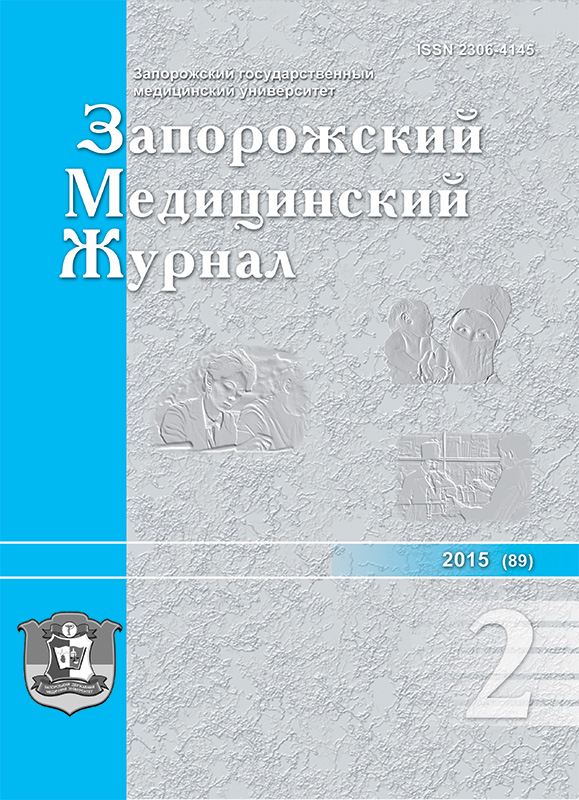Quality of life among non-hodgkin lymphoma survivors
DOI:
https://doi.org/10.14739/2310-1210.2015.2.42047Keywords:
Quality of Life, Non-Hodgkin Lymphoma, Survival, PrognosisAbstract
Aim. Little is known about change in quality of life among lymphoma survivors. We examined change over time in quality of life among long-term survivors of non-Hodgkin lymphoma and identified demographic, clinical and psychosocial risk factors for poor outcomes depending on the appearance of cardiovascular events.
Methods and results. Fifty three cumulative clinical events occurred in 21 (25.6%) patients. Patients who had cardiovascular events reported significantly worse psychological well-being, general health, less vitality and health-related quality of life than patients who had not cardiovascular events. Chemotherapy was associated with quality of lives outcomes. Patients who were not diagnosed with cardiovascular events reported better social well-being than patients who were diagnosed with cardiovascular events. The observed differences in quality of life were significant only when they were measured with the QOL-CS, and not with the SF-36.
Conclusion. The general health perceptions and vitality levels of non-Hodgkin lymphoma survivors with cardiovascular events remained significantly lower than those of patients without cardiovascular events.
References
Der-Martirosian, C., Kritz-Silverstein, D., & Barrett-Connor, E. (2010) Five-year stability in associations of health-related quality of life measures in community-dwelling older adults: The Rancho Bernardo Study. Qual. Life Res., 19, 1333–1341. doi: 10.1007/s11136-010-9700-y.
Ganz, P.A., Desmond, K.A., Leedham, B., Rowland, J. H., Meyerowitz, B. E., & Belin, T. R. (2002) Quality of life in long-term, disease-free survivors of breast cancer: A follow-up study. J. Natl. Cancer Inst., 94, 39–49. doi: 10.1093/jnci/94.1.39.
Kim, S. H., Kim, I. R., Kim, S. H., Lee, S., Ok, O., Kim, W. S., et al. (2014) Health-related quality of life in Korean lymphoma survivors compared with the general population. Ann. Hematol., 93, 1531–1540. doi: 10.1007/s00277-014-2091-3.
Norman, G. R., Sloan, J. A., Wyrwich, K. W. (2003) Interpretation of changes in health-related quality of life: The remarkable universality of half a standard deviation. Med. Care., 41, 582–592.
Reeve, B. B., Potosky, A. L., Smith, A. W., Han, P. K., Hays, R. D, Davis, W. W. et al. (2009) Impact of cancer on health-related quality of life of older Americans. Natl. Cancer Inst., 101, 860–868. doi: 10.1093/jnci/djp123.
Sangha, O., Stucki, G., Liang, M.H., Fossel, A. H., & Katz, J. N. (2003) The Self-Administered Comorbidity Questionnaire: A new method to assess comorbidity for clinical and health services research. Arthritis Rheum, 49, 156–163.
Wagner, L. I., Zhao, F., Hong, F., Williams, M. E., Gascoyne, R. D., Krauss, J. C., et al. (2015) Anxiety and Health-Related Quality of Life Among Patients With Low-Tumor Burden Non-Hodgkin Lymphoma Randomly Assigned to Two Different Rituximab Dosing Regimens: Results From ECOG Trial E4402 (RESORT). J. Clin. Oncol., 33, 740–748. doi: 10.1200/JCO.2014.57.6801.
Ware, J. E., & Kosinski, M. A. (2004) SF-36 Physical and Mental Health Summary Scales: A Manual for Users of Version 1 (ed 2). Lincoln, RI: Quality Metric.
Downloads
How to Cite
Issue
Section
License
Authors who publish with this journal agree to the following terms:
Authors retain copyright and grant the journal right of first publication with the work simultaneously licensed under a Creative Commons Attribution License that allows others to share the work with an acknowledgement of the work's authorship and initial publication in this journal. 

